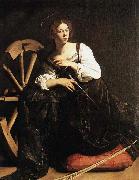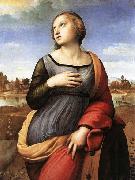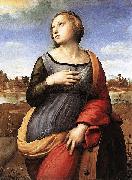
|
Henri Lehmann
|
|||
|
|
|||
| German Neoclassical Painter, 1814-1882,was a French historical and portrait painter, born in Kiel, Schleswig. He was a pupil of his father, Leo Lehmann, and of Ingres in Paris, where he opened a studio in 1847, after having become naturalized. His brother Rudolf Lehmann was a well-known portrait artist. | |||
|
|
|||
|
St Catherine of Alexandria new16/Henri Lehmann-889664.jpg Painting ID:: 44042 |
1839 Oil on canvas, 152 x 262 cm | ||
|
|
|||
|
Lorenzo Lotto
|
|||
|
|
|||
| Italian 1480-1556 Lorenzo Lotto Galleries In this last period of his life, Lorenzo Lotto would frequently move from town to town, searching for patrons and commissions. In 1532 he went to Treviso. Next he spent about seven years in the Marches (Ancona, Macerata en Jesi), returning to Venice in 1540. He moved again to Treviso in 1542 and back to Venice in 1545. Finally he went back to Ancona in 1549. This was a productive period in his life, during which he painted several altarpieces and portraits : Santa Lucia before the Judge, 1532, Jesi, Pinacoteca comunale The Sleeping Child Jesus with the Madonna, St. Joseph and St. Catherine of Alexandria, 1533, Bergamo, Accademia Carrara Portrait of a Lady as Lucretia, 1533, National Gallery, London. Holy Family with SS Jerome, Anna and Joachim, 1534, Firenze, Uffizi Holy Family, ca 1537, Paris, Louvre Portrait of a Young Man, Firenze, Uffizi Crucifixion, Monte San Giusto, Church of S Maria in Telusiano Rosary Madonna, 1539, Cingoli, Church of San Nicolo Portrait of a Man, 1541, Ottawa, National Gallery of Canada Bust of a Bearded Man, 1541, ascribed, San Francisco, Fine Arts Museum The Alms of Saint Anthony, 1542, Venezia, church SS Giovanni e Paolo Madonna and four Saints, 1546, Venezia, Church of San Giacomo dell??Orio Portrait of fra?? Gregorio Belo da Vicenza, 1548,New York, Metropolitan Museum Assumption, 1550, Ancona, church San Francesco alle Scale The Crossbowman, 1551, Rome, Pinacoteca Capitolina Portrait of an Old man, ascribed, ca 1552, Saint Petersburg, Ermitage Presentation in the Temple, 1555, Loreto, Palazzo Apostolico A Venetian woman in the guise of Lucretia (1533).At the end of his life it was becoming increasingly difficult for him to earn a living. Furthermore, in 1550 one of his works had an unsuccessful auction in Ancona. As recorded in his personal account book, this deeply disillusioned him. As he had always been a deeply religious man, he entered in 1552 the Holy Sanctuary at Loreto, becoming a lay brother. During that time he decorated the basilica of S Maria and painted a Presentation in the Temple for the Palazzo Apostolico in Loreto. He died in 1556 and was buried, at his request, in a Dominican habit. Giorgio Vasari included Lotto's biography in the third volume of his book Vite. Lorenzo Lotto himself left many letters and a detailed notebook (Libro di spese diverse, 1538-1556), giving a certain insight in his life and work. Among the many painters he influenced are likely Giovanni Busi | |||
|
|
|||
|
St Catherine of Alexandria new19/Lorenzo Lotto-335576.jpg Painting ID:: 52152 |
1522 Oil on wood, 57 x 50 cm | ||
|
|
|||
|
Caravaggio
|
|||
|
|
|||
| Italian Baroque Era Painter, ca.1571-1610 Italian painter. After an early career as a painter of portraits, still-life and genre scenes he became the most persuasive religious painter of his time. His bold, naturalistic style, which emphasized the common humanity of the apostles and martyrs, flattered the aspirations of the Counter-Reformation Church, while his vivid chiaroscuro enhanced both three-dimensionality and drama, as well as evoking the mystery of the faith. He followed a militantly realist agenda, rejecting both Mannerism and the classicizing naturalism of his main rival, Annibale Carracci. In the first 30 years of the 17th century his naturalistic ambitions and revolutionary artistic procedures attracted a large following from all over Europe. | |||
|
|
|||
|
St Catherine of Alexandria new21/Caravaggio-285856.jpg Painting ID:: 62387 |
173 x 133 cm Thyssen-Bornemisza Collection, Madrid The painting formerly belonged to Cardinal Del Monte, one of the artist's patrons. Here we see a single female figure in an interior devoid of architectural allusions. The image appears with a boldness and an immediacy that combine the nobility of the subject (St Catherine was a king's daughter) with the almost plebeian pride of the model (no doubt a Roman woman of the people, who appears on other paintings of the artist, too). The breadth of conception and realization, and the perfect mastery of a very difficult composition (the figure and objects completely fill the painting, in a subtle play of diagonals) are striking. Caravaggio here chose a "grand" noble approach that heralds the great religious compositions he would soon do for San Luigi dei Francesi. The extraordinary virtuosity in the painting of the large, decorated cloth is absorbed as an integral part of the composition. This is something his followers would not often succeed in doing, for they frequently dealt with the single components of the painting individually, with adverse effects on the unity of the whole. | ||
|
|
|||
|
RAFFAELLO Sanzio
|
|||
|
|
|||
| Italian High Renaissance Painter, 1483-1520 Italian painter and architect. As a member of Perugino's workshop, he established his mastery by 17 and began receiving important commissions. In 1504 he moved to Florence, where he executed many of his famous Madonnas; his unity of composition and suppression of inessentials is evident in The Madonna of the Goldfinch (c. 1506). Though influenced by Leonardo da Vinci's chiaroscuro and sfumato, his figure types were his own creation, with round, gentle faces that reveal human sentiments raised to a sublime serenity. In 1508 he was summoned to Rome to decorate a suite of papal chambers in the Vatican. The frescoes in the Stanza della Segnatura are probably his greatest work; the most famous, The School of Athens (1510 C 11), is a complex and magnificently ordered allegory of secular knowledge showing Greek philosophers in an architectural setting. The Madonnas he painted in Rome show him turning away from his earlier work's serenity to emphasize movement and grandeur, partly under Michelangelo's High Renaissance influence. The Sistine Madonna (1513) shows the richness of colour and new boldness of compositional invention typical of his Roman period. He became the most important portraitist in Rome, designed 10 large tapestries to hang in the Sistine Chapel, designed a church and a chapel, assumed the direction of work on St. Peter's Basilica at the death of Donato Bramante, | |||
|
|
|||
|
St Catherine of Alexandria new21/RAFFAELLO Sanzio-492992.jpg Painting ID:: 63821 |
1508 Oil on wood, 71,1 x 54,6 cm National Gallery, London Half-way between a work of private devotion and a collector's piece, this picture was probably painted just before Raphael's move to Rome. Rather more evident than the influence of Perugino is that of Leonardo, who perfected the `serpentine' pose in which the body twists about its axis, lending movement, grace and three-dimensional presence even to static figures. Characteristically, Raphael justifies this unnatural position through a narrative device: Catherine turns her head upwards and to her right in ecstatic communion with the divine light descending in thin gold rays from the sky. St Catherine of Alexandria is portrayed in a marvellous, twisted pose. Her left arm is leaning on her attribute, the wheel, and her right hand is pressed to her breast while she gazes up at a sky flooded with light. The composition is as rich in harmonious movement as the coloration is full and varied. The landscape is painted with particular care. Its light shading indicates a residual influence of Leonardo, although the jagged mountains which often characterize Leonardo's landscapes are absent. The delicate modelling of the saint, the slight torsion of her body as she leans on the wheel of her martyrdom (whose spikes have been reduced to rounded knobs in order to tone down the element of cruelty) fully express the balanced character of Raphael's art. The panel clearly shows the intense formal research which underlies Raphael's figurative creations. He is always careful not to excite emotions which he considers too intense and to mitigate tones and thematic elements in search of a perfect balance between design, colour, pose and expression, and between the figurative and ornamental elements.Artist:RAFFAELLO Sanzio Title: St Catherine of Alexandria Painted in 1501-1550 , Italian - - painting : religious | ||
|
|
|||
|
RAFFAELLO Sanzio
|
|||
|
|
|||
| Italian High Renaissance Painter, 1483-1520 Italian painter and architect. As a member of Perugino's workshop, he established his mastery by 17 and began receiving important commissions. In 1504 he moved to Florence, where he executed many of his famous Madonnas; his unity of composition and suppression of inessentials is evident in The Madonna of the Goldfinch (c. 1506). Though influenced by Leonardo da Vinci's chiaroscuro and sfumato, his figure types were his own creation, with round, gentle faces that reveal human sentiments raised to a sublime serenity. In 1508 he was summoned to Rome to decorate a suite of papal chambers in the Vatican. The frescoes in the Stanza della Segnatura are probably his greatest work; the most famous, The School of Athens (1510 C 11), is a complex and magnificently ordered allegory of secular knowledge showing Greek philosophers in an architectural setting. The Madonnas he painted in Rome show him turning away from his earlier work's serenity to emphasize movement and grandeur, partly under Michelangelo's High Renaissance influence. The Sistine Madonna (1513) shows the richness of colour and new boldness of compositional invention typical of his Roman period. He became the most important portraitist in Rome, designed 10 large tapestries to hang in the Sistine Chapel, designed a church and a chapel, assumed the direction of work on St. Peter's Basilica at the death of Donato Bramante, | |||
|
|
|||
|
St Catherine of Alexandria new24/RAFFAELLO Sanzio-954789.jpg Painting ID:: 82797 |
1508(1508) Medium Oil on wood cyf | ||
|
|
|||
|
Also Buy::. For Following Paintings / Artists / Products, Please Use Our Search Online: |












